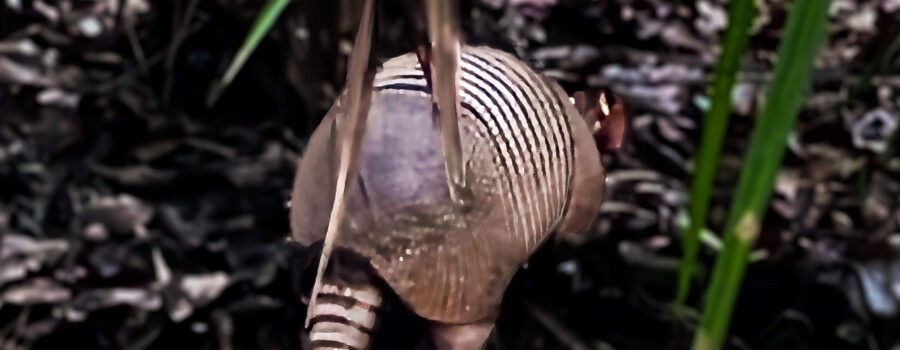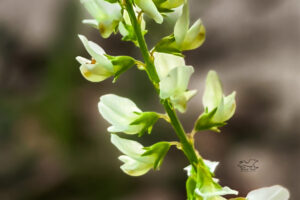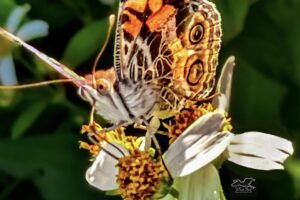The Nine Banded Armadillo is an Interesting, Unique Animal

A week ago Friday I played hooky from work (I had time that had to be used before the end of the year) and went hiking at Paynes Prairie State Park. I hadn’t been there for many years and it’s only an hour from my house, so I’d been wanting to go for awhile. The park is quite large with many different trails that go through a variety of habitats, so it’s always interesting and you never know what you may see. As usual, I was not disappointed in either what I saw or the great workout I got. On a week day the park usually isn’t super crowded, so I had plenty of space and time to myself and by hiking quietly I was able to sneak up on a nine banded armadillo (Dasypus novemcinctus) foraging for insects under a stand of saw palmettos.
The nine banded armadillo is the only armadillo species in North America, and it can only be found in the southeastern part of the United States, although it’s range has been extending northwards. It can also be found throughout Central America and into South America. It’s a very interesting species that is unique in a number of ways. Most obviously, it is covered by a hard shell made up of scutes of bone that are covered in scaly skin. The bony areas are arranged in bands with sections of thick skin in between allowing the animal some flexibility. Even though it’s known as the nine banded armadillo, any individual may have between seven and eleven actual bands. Despite what some myths say, this is too many bands of armor to allow these armadillos to curl up into a ball for protection. In fact, the only species of armadillo capable of curling up is a three banded South American species.

Nine banded armadillos are also unique among mammals in how they reproduce. After mating in July or August, a single egg is fertilized and then delayed from implanting in the uterus for about four months to insure that young are not born during winter. Once the egg does implant it divides and produces four identical embryos. The four babies are usually born in March in one of the female’s multiple burrows. The only other animals that reproduce by regularly producing multiple identical offspring are all invertebrates. Except for when females are caring for their young, armadillos tend to be solitary animals that maintain a small territory. They are mainly insectivores that dig for grubs, beetles, ants, termites, grasshoppers, and worms. They will sometimes supplement their diets with small amphibians and reptiles and young birds or eggs. On rare occasions they may even eat carrion and fruits, berries, or fungi.
Armadillos are seen as pests by many people because of their digging, but they are actually advantageous to have around. Their multiple burrows help to house many other species including burrowing owls, cotton rats, pine snakes, and indigo snakes. Their digging often makes insects available to other animals, especially birds. At least one type of warbler is known to follow armadillos around to eat insects that they disturb. Armadillos have a keen sense of smell that allows them to smell insects under over eight inches of soil. Their vision is not particularly good, though, so it’s not difficult to sneak up on them while they are foraging. If startled, they can jump straight up three to four feet off the ground. They are also deceptively fast, and will quickly run into a nearby burrow or patch of thorns to avoid predators. This is exactly what happened during my encounter with this one. I was able to get fairly close from behind, but when I tried to move around in the scrub to get some photos of the face, it heard me and raced off. Even though it was a fairly short encounter, I enjoyed watching this cool little animal doing its thing in its own backyard.






Recent Comments